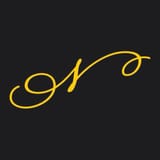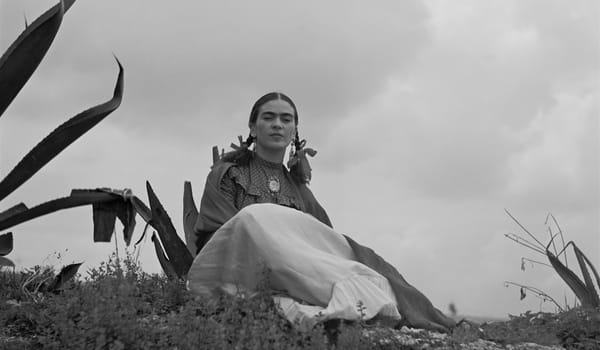Essential Art Supplies for Beginners: A Guide to the Basic Tools and Materials Needed to Start Creating Art
Discover the essential art supplies for beginners in this comprehensive guide. Learn about the basic tools and materials for drawing, painting, and more. Start your artistic journey with confidence, using the right supplies to unlock your creativity.

Embarking on the journey of creating art is both exhilarating and intimidating. The creative world offers endless possibilities, but it can also seem overwhelming with the vast array of tools and materials available. As a beginner, having a basic understanding of essential art supplies can help you start with confidence and avoid unnecessary confusion. This guide is designed to provide you with a comprehensive overview of the basic tools and materials you'll need to start creating art. Let's dive in!
Basic Drawing Supplies
Drawing is often the gateway to other art forms. It's a foundational skill that can be used across many different mediums. To get started, here are some key drawing supplies:
Pencils
Pencils are the cornerstone of drawing. They come in various types and hardness levels, each suited to different purposes.
- Graphite Pencils: These are the most common type of pencils for drawing and sketching. They range from hard (e.g., 2H, 4H) to soft (e.g., 2B, 4B, 6B). For beginners, a selection of soft pencils like 2B to 6B is ideal for shading and creating a range of tones.
- Charcoal Pencils: Charcoal offers rich, dark lines and is great for expressive sketches. They can be messier than graphite, so be prepared for some smudging.
- Coloured Pencils: Coloured pencils are a fun way to add colour to your drawings. Look for sets with a wide range of colours to give you flexibility in your art.
- Mechanical Pencils: These are ideal for fine lines and detail work. They use thin lead and don't require sharpening.
Erasers
Erasers are essential for correcting mistakes and creating highlights.
- Kneaded Erasers: These can be shaped to create precise erasing or blended for softer effects.
- Vinyl Erasers: These are ideal for clean, precise erasing without smudging.
- Gum Erasers: These are gentle and work well on delicate paper.
Sharpeners
Keeping your pencils sharp is crucial for clean lines and detail.
- Manual Sharpeners: Simple and reliable, these come in various styles, including handheld and crank-operated.
- Electric Sharpeners: These are faster and more consistent but can be bulkier.
Paper
The type of paper you choose will affect your drawings' overall quality and feel.
- Sketchbooks: These come in different sizes and paper weights. A medium-sized sketchbook with paper weight around 70-100 gsm is perfect for beginners.
- Loose Paper: If you prefer working on single sheets, look for higher-weight paper to prevent tearing and smudging.
Basic Painting Supplies
Painting offers a whole new world of creativity. Whether you're interested in acrylics, watercolours, or oils, here are the essential supplies you'll need.
Paints
The type of paint you choose depends on your preference and the style of art you want to create.
- Acrylic Paints: These are versatile, fast-drying, and suitable for various surfaces. They are great for beginners because they can be diluted with water and are easy to clean up.
- Watercolour Paints: Watercolours are known for their translucent and fluid qualities. They require specific techniques, but they are a fun medium to explore.
- Oil Paints: These are rich and vibrant but require more setup and cleanup time due to their slow drying times. They are ideal for more experienced artists but can also be used by beginners willing to invest in additional materials.
Brushes
Different brushes offer varying effects, so it's helpful to have a basic understanding of their types and uses.
- Flat Brushes: These are excellent for broad strokes and filling large areas.
- Round Brushes: Ideal for detailed work and fine lines.
- Filbert Brushes: A hybrid of flat and round, filberts are great for blending and soft edges.
- Fan Brushes: These are used for creating texture and special effects.
Palettes
A palette is where you mix and hold your paints.
- Wooden Palettes: Traditional and sturdy, they offer a large mixing area.
- Plastic Palettes: Lightweight and easy to clean, they come in various shapes and sizes.
- Disposable Palettes: These are ideal for beginners who prefer easy cleanup.
Canvas and Paper
The surface on which you paint is crucial to your art's outcome.
- Stretched Canvas: A classic choice, these are pre-stretched and ready to use.
- Canvas Boards: These are a more affordable option, offering a firm surface for painting.
- Watercolour Paper: This specialized paper is designed to handle the wet nature of watercolours. Cold-press paper has more texture, while hot-press paper is smoother.
Other Painting Accessories
Having a few additional accessories can make painting more enjoyable and efficient.
- Easels: Easels hold your canvas or paper at an angle, making it easier to paint.
- Paint Storage: Look for containers or organizers to keep your paints and brushes tidy.
Basic Supplies for Other Art Forms
In addition to drawing and painting, there are many other art forms you might explore. Here are some essential supplies for a few popular art forms:
Pastels
Pastels offer vibrant colours and a unique texture.
- Soft Pastels: These are great for blending and creating smooth transitions.
- Oil Pastels: These offer a richer, oilier texture and can be used on various surfaces.
Markers
Markers are versatile and can be used for illustration, lettering, and more.
- Alcohol-Based Markers: These offer vibrant colours and can be blended for shading effects.
- Water-Based Markers: These are less permanent and easier to clean up.
Inks
Inks are great for fine lines and detailed work.
- India Ink: This is a traditional ink used for pen-and-ink drawings.
- Acrylic Ink: These are vibrant and can be used with brushes or pens.
- Tools for Inks: Consider pens, nibs, and brushes designed for ink work.
Sculpture and Clay
Sculpture and clay work allow you to create three-dimensional art.
- Air-Dry Clay: This is easy to use and doesn't require a kiln to harden.
- Polymer Clay: This can be baked in a regular oven to harden.
- Sculpting Tools: Basic tools for shaping, cutting, and detailing clay.
Essential Accessories for Art
Beyond the specific art supplies, some accessories can help you organize and maintain your art materials.
Storage Solutions
Keeping your supplies organized is crucial for a tidy workspace.
- Art Bins, Totes, and Cases: These come in various sizes and styles to accommodate your art supplies.
Workspaces
Having a dedicated workspace can make art creation more enjoyable.
- Drawing Tables, Desks, and Chairs: Look for adjustable options that suit your comfort and space.
Cleaning Supplies
Keeping your tools clean extends their lifespan and ensures consistent results.
- Brush Cleaners: These are designed to clean and maintain your brushes.
- Water Containers: Useful for cleaning brushes during painting sessions.
Lighting
Good lighting is essential for accurate colour perception and detailed work.
- Natural Lighting: If possible, set up your workspace near a window for natural light.
- Artificial Lighting: Look for lamps or lighting fixtures that provide consistent, adjustable lighting.
Tips for Selecting Art Supplies
As a beginner, it's important to choose supplies that suit your budget and style. Here are some tips to help you make informed choices:
Budget Considerations
Starting with a limited budget? Consider these tips:
- Affordable Supplies: Look for student-grade supplies, which are often more affordable than professional-grade.
- Essentials First: Focus on essential supplies and expand your collection as you gain experience.
Exploring Different Brands
Different brands offer varying quality and price points. Don't hesitate to try different brands to find what works for you.
- Sample Packs: Some brands offer sample packs or starter kits, allowing you to try multiple products at a lower cost.
Importance of Quality over Quantity
It's better to have a few high-quality supplies than a large collection of low-quality ones.
- Invest in Key Tools: Invest in quality pencils, brushes, and paper to ensure a better experience.
Conclusion
Starting your journey into the world of art is an exciting and rewarding experience. With the right supplies and a bit of creativity, you can create amazing works of art. Remember, the key is to experiment, have fun, and find your unique style. Don't be afraid to make mistakes—they're part of the learning process. So, gather your supplies, set up your workspace, and let your creativity flow!
If you're looking for more guidance or inspiration, consider exploring online tutorials, joining art workshops, or connecting with local art communities. Happy creating!





